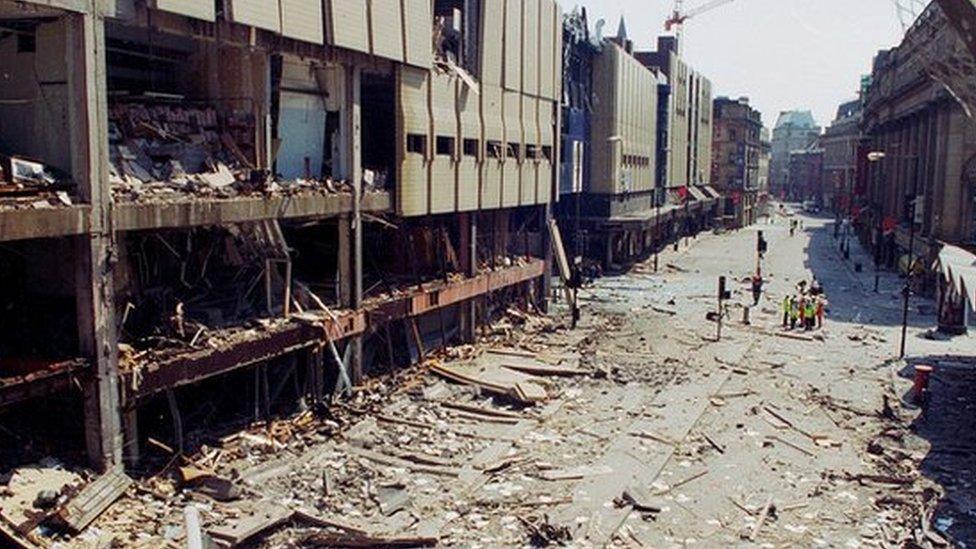Manchester IRA bomb: Terror blast remembered 20 years on
- Published
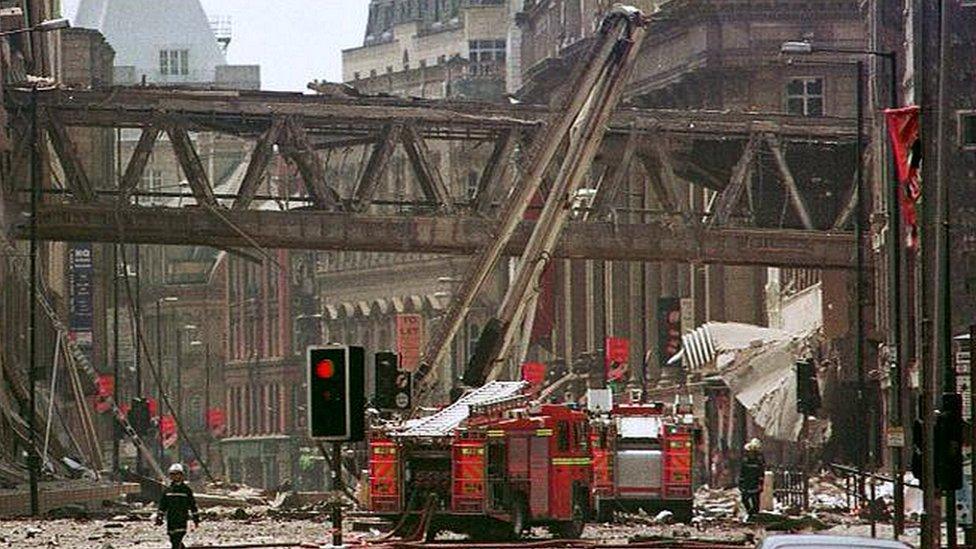
The device was the biggest bomb to explode in mainland UK since World War Two
In 1996 two IRA members planted the UK mainland's biggest bomb since World War Two outside a Manchester shopping centre. The explosion ripped the heart out of the city centre but remarkably no-one was killed. In fact, the blast is now credited by some as kick-starting the city's regeneration.
The sun was shining and England were due to take on Scotland in Euro 96 on 15 June. It was the Saturday before Fathers Day and the Arndale Centre was heaving with shoppers. Football fans were also in town for the next day's Russia v Germany fixture at nearby Old Trafford.
At about 09:20 BST, a white lorry was parked on double yellow lines near the Marks and Spencer store in the heart of the city. CCTV cameras record two men in hooded jackets getting out and walking away. A short time later, a traffic warden placed a parking ticket on the vehicle's windscreen.
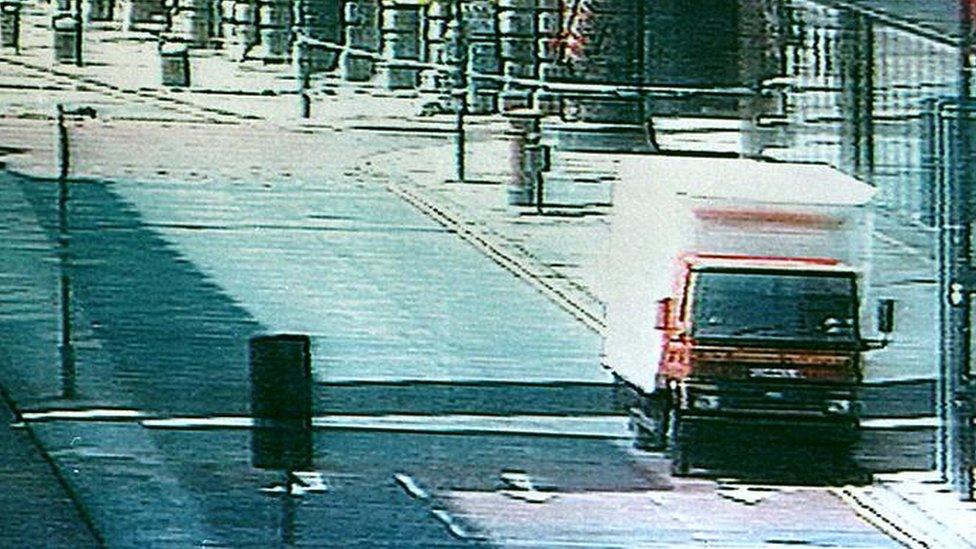
The white lorry with the bomb was filmed by a CCTV camera near the Marks and Spencer store
Just before 10:00 BST, Gary Hall, a security guard at ITV's Granada studios - on the the other side of town - received a phone call from a man with a "very calm" Irish voice. The man said he had planted a bomb that would explode an hour later.
Shortly afterwards, police began evacuating about 80,000 people from the city centre, while attempts were made to find the bomb.
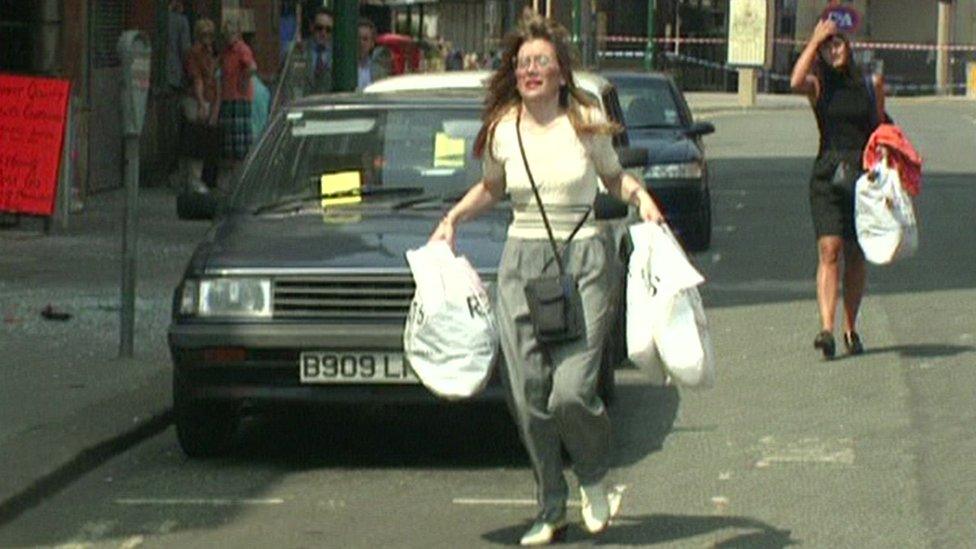
About 80,000 people were evacuated from the city centre within an hour
People ran away in fear as shops and offices emptied. Amid the panic, a police officer spotted the white lorry and noticed wires running from the dashboard.
Bomb disposal officers, dispatched from their base in Liverpool, planned to defuse the explosive with a remote-controlled robot.
However, the attempt failed and, at 11:17 BST, the 3,300lb device exploded. Smoke mushroomed high above the city while buildings shook and glass shattered, raining debris on people outside the cordoned area.
Aerial footage shows the IRA bomb explode in Manchester in June 1996
Some 220 people were injured and several were traumatised by the massive blast.
As emergency services dealt with the injured, fire crews searched shops and offices for casualties. In the confusion, fallen shop mannequins were briefly mistaken for bodies.
However, to the amazement of many, no-one was killed.
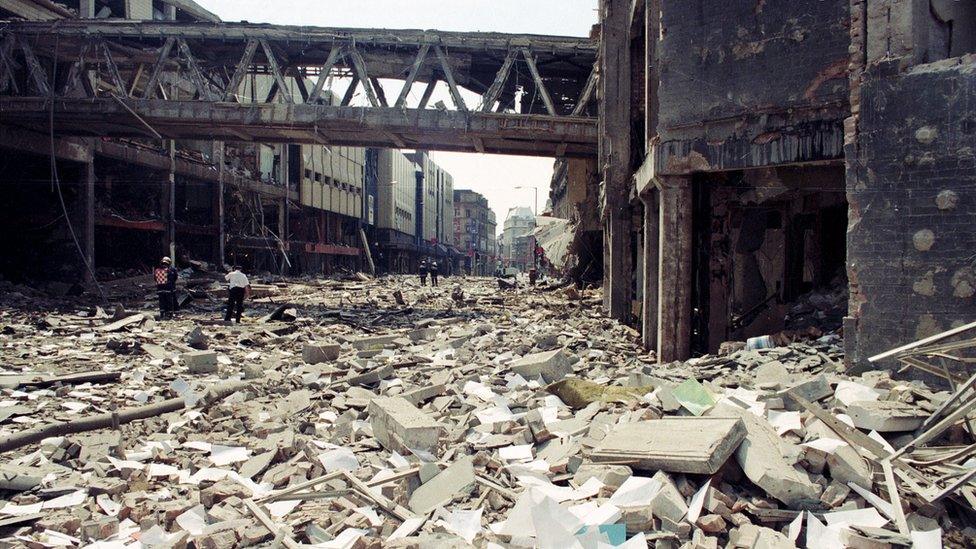
The bomb caused devastation across the city centre leading to a huge rebuilding project
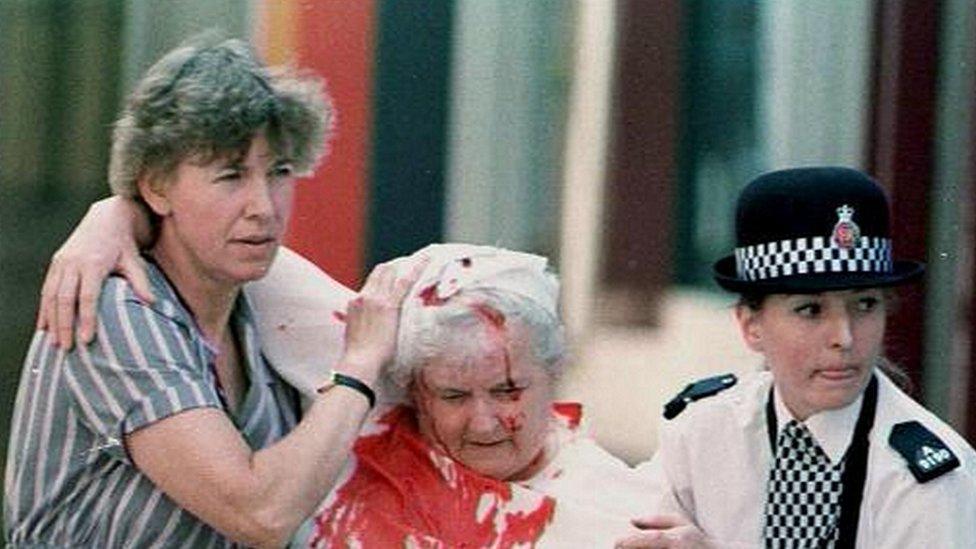
Many were injured by flying glass and debris

False rumours of a second bomb led to one couple and their bridesmaid fleeing for safety
No-one has ever been charged over the blast although Greater Manchester Police recently launched another review of the evidence.
It is estimated the IRA bombing caused £700 million worth of damage.
Plans to regenerate Manchester had already been in place - a tram network had been reintroduced earlier in the 1990s, cultural venues were shaping up and the city had already won the bid to host the 2002 Commonwealth Games.
But the bomb's devastation inevitably widened the scale of rebuilding ahead of the millennium.
A symbol of the city's effort to get back on its feet was the fact that it still managed to stage the Euro 96 match on the day after the attack.
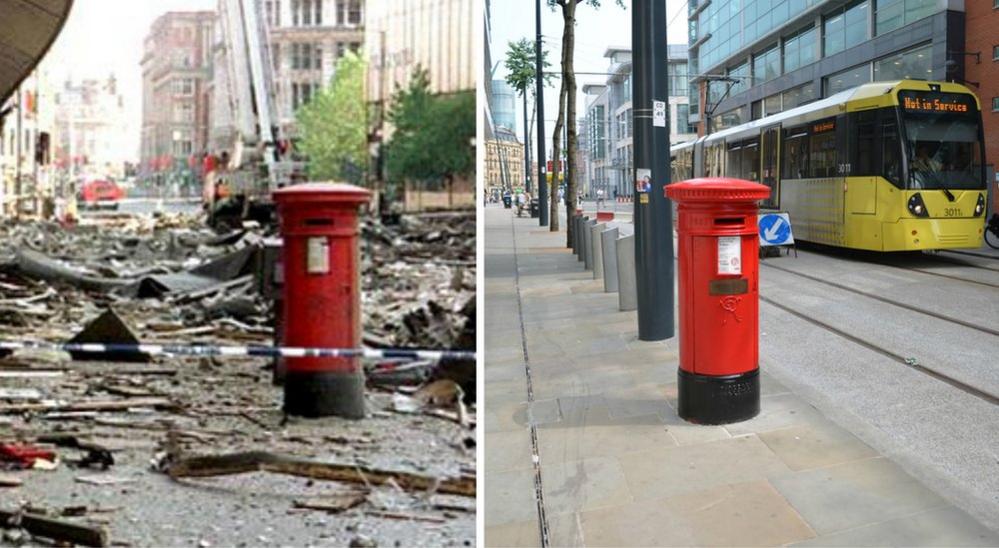
This post box near the lorry famously withstood the blast and is still in use
After the bomb, Manchester received about £583 million in private and public funding, external towards its regeneration, which saw it attract upmarket retailers such as Selfridges and Harvey Nichols.
When a former newspaper printworks nearby was transformed into an entertainment venue in 2000, the relaunch was attended by former Manchester United manager Sir Alex Ferguson and singer Lionel Ritchie.
The National Football Museum moved next door in 2012, occupying the eye-catching Urbis building that was completed before the Commonwealth Games.
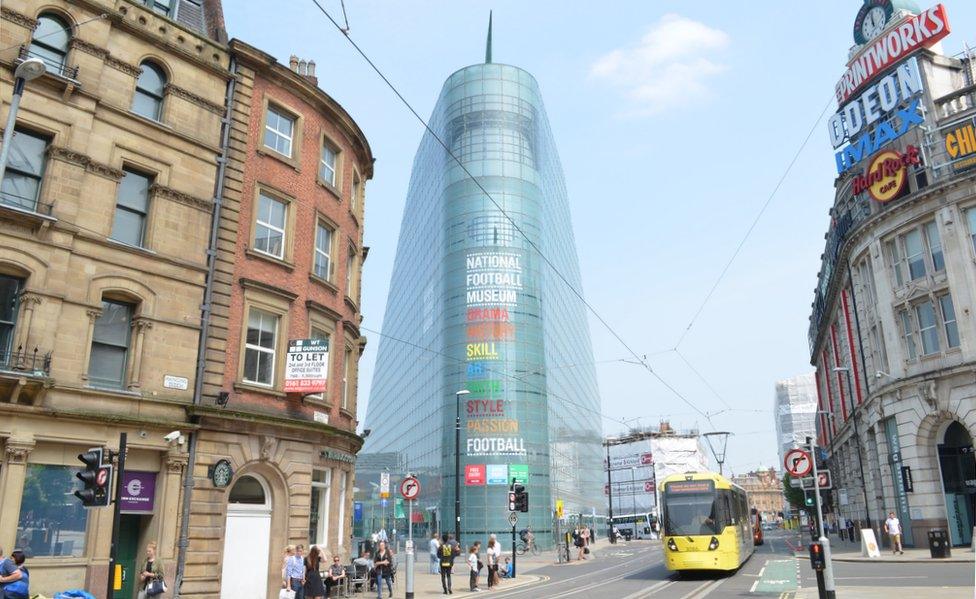
The Urbis building is now the home of the National Football Museum
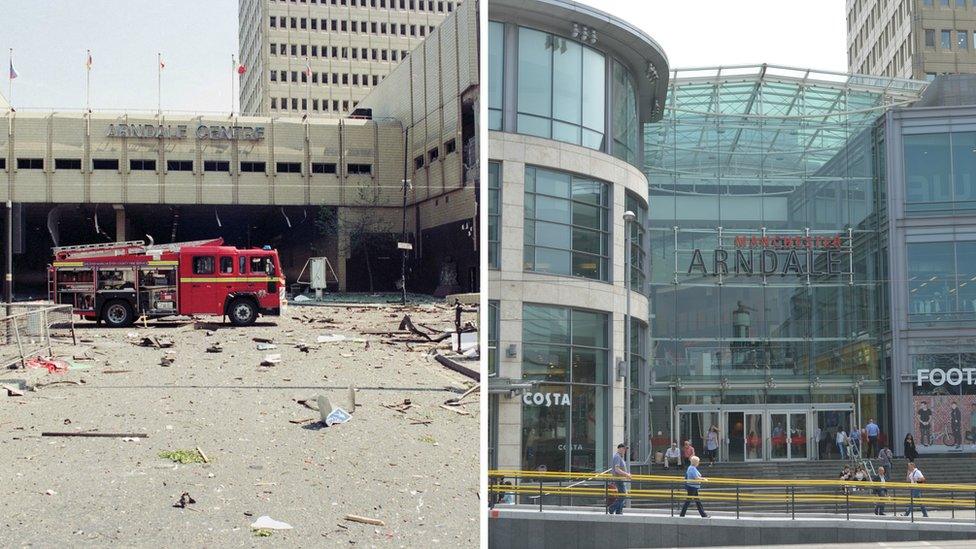
The Arndale Centre has undergone a makeover and expansion since 1996
When the Marks and Spencer store that took the worst brunt of the blast was reopened in 1999 - a key moment in the rebirth of the city centre - it was not a politician or member of the royal family, nor a sports or entertainment figure, that was invited to cut the ribbon.
The honour went to three-year-old Sam Hughes, pictured in the most striking image of the day of the explosion, as a security guard tried to help him.
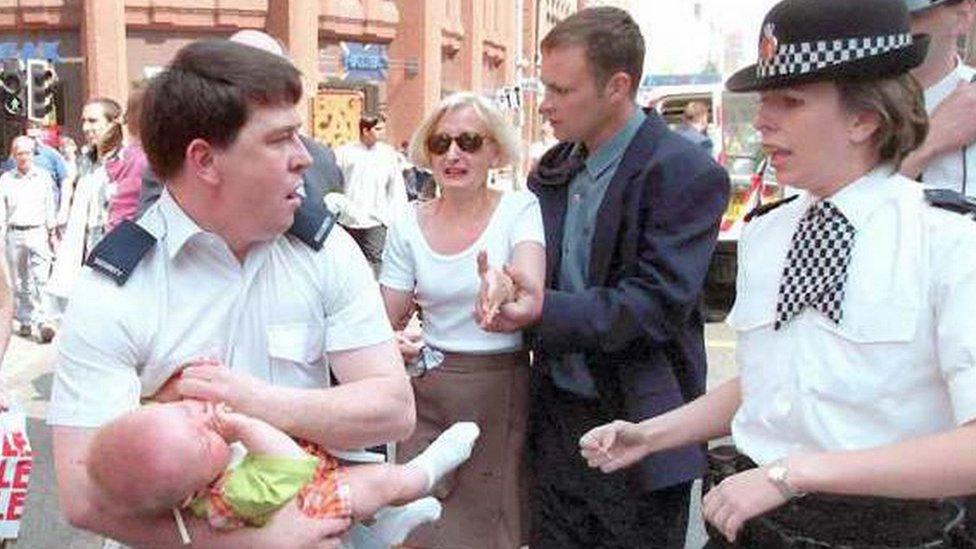
Baby Sam Hughes was injured on the day of the attack
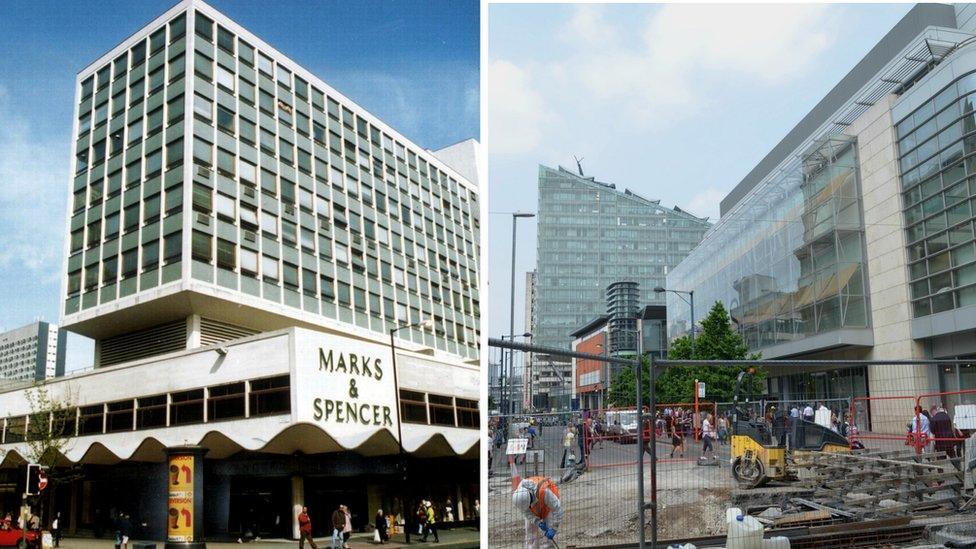
The Marks and Spencer building was rebuilt and is now surrounded by the construction site for a new tram route
Manchester property consultant Ken Bishop says: "The great irony of the bomb is that the devastation it brought acted as a catalyst for the improvement of what was an unloved part of the city."
He believes the city's business sector would have grown without the attack "but arguably the uninvited intervention brought about a greater determination and swifter pace for this to happen".
- Published16 June 2014

- Published22 May 2014
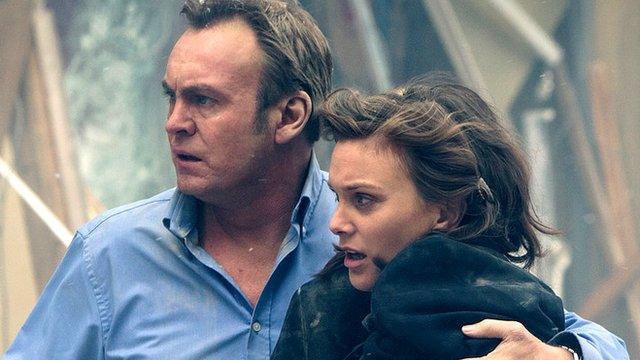
- Published3 June 2016
